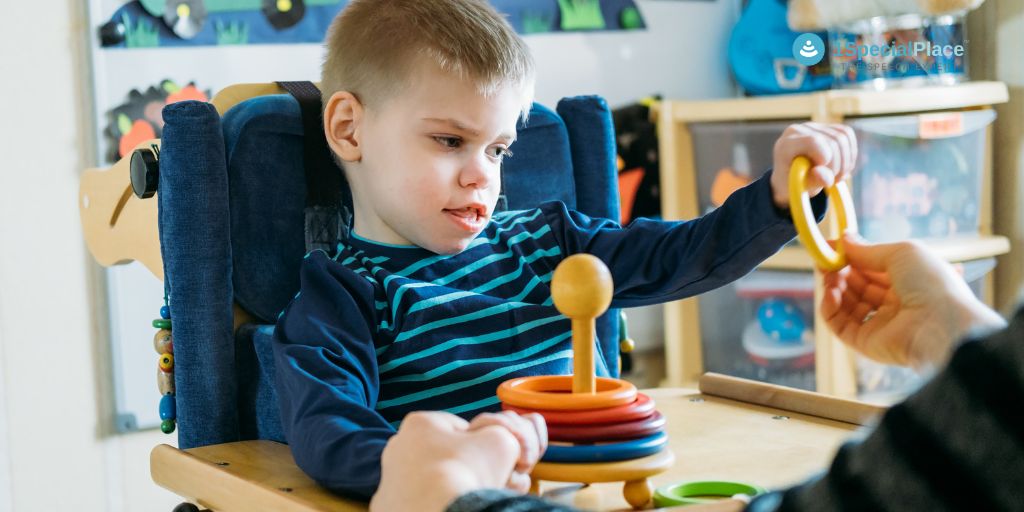
Addressing the Silent Struggle in Special Needs Children
Bullying and Special Needs: Addressing the Silent Struggle in Children with Speech and Hearing Impairments.
In the tapestry of childhood, every thread contributes to the unique and intricate pattern that shapes a person. For Special Needs children facing the additional challenges of speech and hearing problems, the journey can be fraught with obstacles, and unfortunately, bullying often becomes a distressing chapter in their story. Bullying is persistent, focused aggression that takes advantage of the target’s lack of authority over the bully. Although some kids who experience bullying might be perceived as catalysts or provocateurs, this does not justify bullying conduct.
Understanding the Silent Struggle
Children with speech and hearing impairments, as well as those with special needs, navigate a world that may not always understand their unique communication styles. This lack of understanding can make them more vulnerable to bullying, a pervasive issue that impacts their emotional well-being and hinders their academic and social development.
The Cruelty of Words
Bullying manifests in various forms, and for kids with speech and hearing problems, verbal abuse can be particularly painful. Ridicule, teasing, or exclusion can strike deep, as communication challenges may already make them feel isolated. The impact of hurtful words can reverberate long after the school bell rings, affecting self-esteem and hindering the development of healthy social relationships.
The Isolation Dilemma
Communication is the bridge that connects individuals, but for children with speech and hearing impairments, this bridge can be shaky. Bullying often exploits this vulnerability, leading to isolation. The isolation dilemma is twofold: these children may feel left out due to communication barriers, and the bullying intensifies this sense of exclusion. As a result, they may withdraw further, compounding the emotional toll.
Educational Challenges
The classroom, meant to be a nurturing environment for learning and growth, can become a battleground for children with speech and hearing problems. Bullying may extend beyond verbal abuse to academic settings, where students with special needs may face additional challenges. Teachers and administrators must be vigilant in creating inclusive spaces that foster a supportive atmosphere for all students.
Empathy Deficit
Bullying often stems from a lack of empathy or understanding, and children with speech and hearing problems may find themselves on the receiving end of this empathy deficit. Educational initiatives promoting awareness and understanding of various communication needs can play a crucial role in fostering empathy among students and educators alike.
The Power of Advocacy
Parents, educators, and advocates must collaborate to create a safety net for children with speech and hearing impairments. This involves not only addressing instances of bullying but also proactively fostering an environment that celebrates diversity and promotes inclusivity. Advocacy efforts should extend beyond the classroom to the broader community, ensuring that support networks are firmly in place.
Building Bridges through Education
Education is a powerful tool for dismantling misconceptions and breaking down communication barriers. Integrating awareness programs into the curriculum can cultivate a culture of acceptance, teaching children from a young age that differences should be celebrated, not ridiculed. This educational approach helps create a generation that values diversity and understands the importance of inclusive communication.
The Role of Speech Therapy
Speech therapy emerges as a cornerstone in the battle against bullying for children with speech and hearing impairments. By providing specialized support, speech therapists empower these children to communicate effectively, boosting their confidence and resilience. Additionally, therapy sessions create a safe space where children can express themselves without fear of judgment, fostering emotional well-being.
Bullying: Definitions and Contradictions
Bullying is defined as unwelcome, hostile conduct including an actual or perceived power disparity. According to Stopbullying.gov’s approved standards, an act of bullying needs to meet certain requirements in order to qualify as such:
Moving Towards a More Inclusive Future
Bullying in children with speech and hearing problems and special needs is a pervasive issue that demands our attention and collective action. Schools, parents, and communities must unite to create an environment where every child feels seen, heard, and valued. Through education, advocacy, and support, we can weave a new narrative—one where differences are embraced, and the silent struggle is transformed into a story of resilience, strength, and inclusivity.
At 1SpecialPlace, we extend beyond speech therapy, offering a compassionate haven for families and children grappling with the emotional toll of bullying. Our comprehensive approach includes mental health support, fostering resilience and well-being in the face of adversity.
- Speech Therapy Activities for Ganesha Chaturthi - September 6, 2024
- 5 Ways to Help Your Child’s Language Development - August 31, 2024
- Epilepsy – Myths and Facts - August 20, 2024

Leave a Comment
(0 Comments)